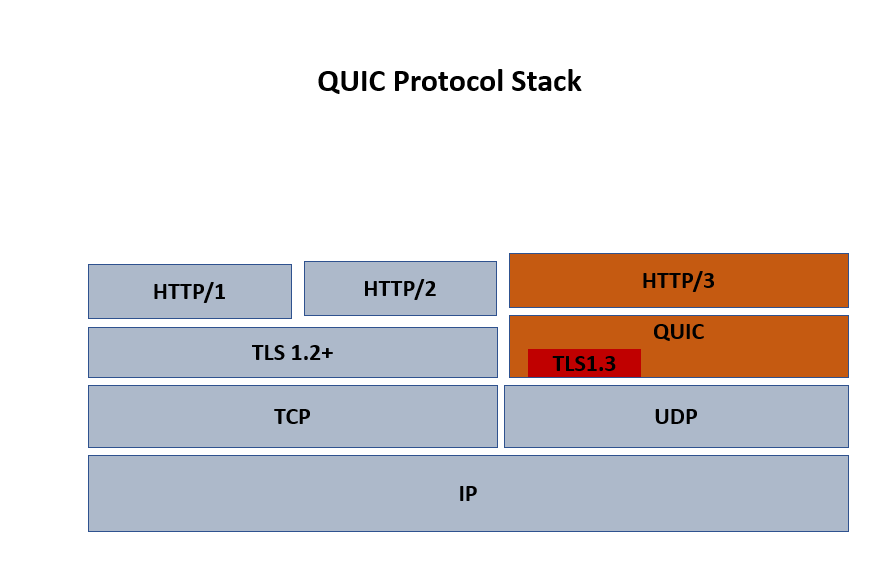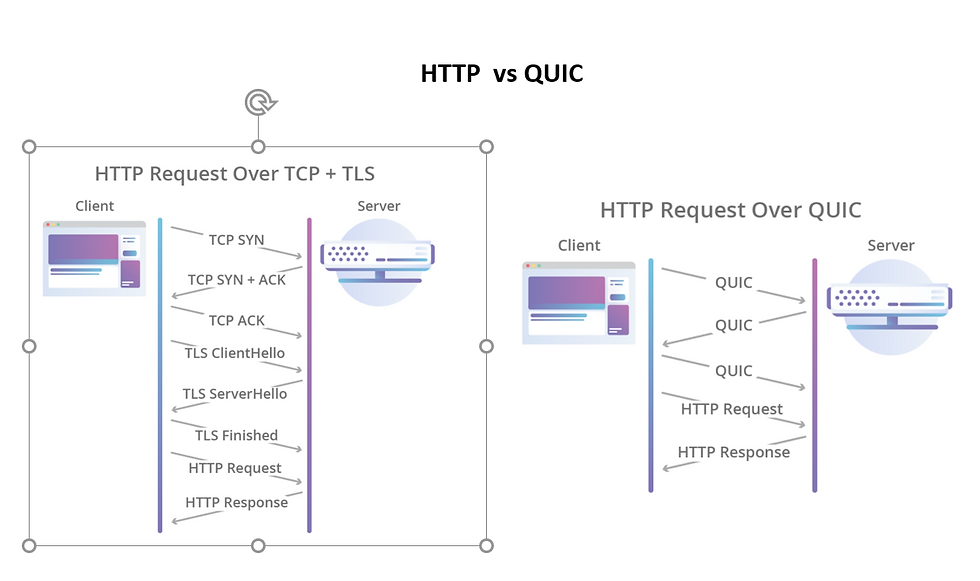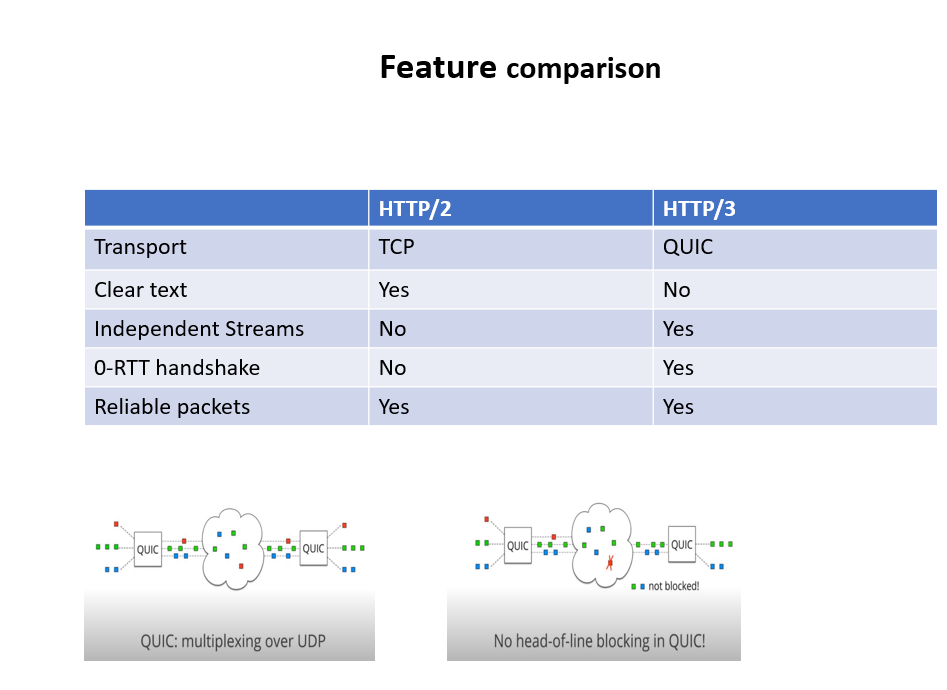QUIC protocol
- Suneetha Yamani
- Sep 30, 2020
- 2 min read
I came across interesting protocol called quic developed by google, which will solve many problems which we are facing in HTTP/1 and HTTP/2 like head of line blocking etc.
QUIC uses UDP with TLS 1.3

UDP is not reliable but where as QUIC is reliable and since it uses UDP less number of handshakes compare to Http2

QUIC process multiple streams over single connection

Advantages of QUIC:
•No Head of line blocking
•Multiplexing over UDP
•Independent streams
•Faster Handshakes
•Connection id is independent of IP
•Always encrypted
QUIC Challenges
•3-7% of QUIC fails
•Clients need fall back algorithms
•CPU intensive
•Unoptimized UDP stacks
•Funny TLS layer
•All QUIC stacks are user land
•No standard API
•Lack of tooling
Now we understood about quic protocol ,how to implement quic client server with node js??
Node js support to quic still under implementation so we need to build node js from source code get quic protocol lib support.
Git clone https://github.com/nodejs/quic.git
you can use PowerShell. Run those commands from an elevated PowerShell terminal:
Set-ExecutionPolicy Unrestricted -Force iex ((New-Object System.Net.WebClient).DownloadString('https://boxstarter.org/bootstrapper.ps1')) get-boxstarter -Force
Install-BoxstarterPackage https://raw.githubusercontent.com/nodejs/node/master/tools/bootstrap/windows_boxstarter -DisableReboots
.\vcbuild.bat experimental-quic
const quic = require('net'); console.log(quic);
$ ./node quic.js
{
_createServerHandle: [Function: createServerHandle],
_normalizeArgs: [Function: normalizeArgs],
_setSimultaneousAccepts: [Function: _setSimultaneousAccepts],
connect: [Function: connect],
createConnection: [Function: connect],
createServer: [Function: createServer],
isIP: [Function: isIP],
isIPv4: [Function: isIPv4],
isIPv6: [Function: isIPv6],
Server: [Function: Server],
Socket: [Function: Socket],
Stream: [Function: Socket],
createQuicSocket: [Function: createQuicSocket]
}
If node was built with --experimental-quic you should see the createQuicSocket in the output.
Genarate self signed sertificates with below commands
mkdir ssl_certs
cd ssl_certs
openssl genrsa 2024 > server.key
openssl req -new -key server.key -subj "/C=JP" > server.csr
openssl x509 -req -days 3650 -signkey server.key < server.csr > server.crt
use these cert in use node js scripts and run the below script to start quic server
use custom node js ex: quic\Release\node.exe .\Quic.js
const { createQuicSocket } = require('net');
const fs = require('fs');
const key = fs.readFileSync('./ssl_certs/server.key');
const cert = fs.readFileSync('./ssl_certs/server.crt');
const ca = fs.readFileSync('./ssl_certs/server.csr');
const port = 1234;
// Create the QUIC UDP IPv4 socket bound to local IP port 1234
const server = createQuicSocket({ endpoint: { port } });
// Tell the socket to operate as a server using the given
// key and certificate to secure new connections, using
// the fictional 'hello' application protocol.
server.listen({ key, cert, alpn: 'hello' });
server.on('session', (session) => {
// The peer opened a new stream!
session.on('stream', (stream) => {
// Echo server
stream.pipe(stream);
});
});
server.on('listening', () => {
// The socket is listening for sessions!
console.log(`listening on ${port}...`);
console.log('input something!');
});
const socket = createQuicSocket({
client: {
key,
cert,
ca,
requestCert: true,
alpn: 'hello',
servername: 'localhost'
}
});
const req = socket.connect({
address: 'localhost',
port,
});
req.on('secure', () => {
const stream = req.openStream();
// stdin -> stream
process.stdin.pipe(stream);
stream.on('data', (chunk) => console.log('client(on-secure): ', chunk.toString()));
stream.on('end', () => console.log('client(on-secure): end'));
stream.on('close', () => {
// Graceful shutdown
socket.close();
});
stream.on('error', (err) => console.error(err));
});
output:
quic\Release\node.exe .\Quic.js
(node:8924) ExperimentalWarning: The QUIC protocol is experimental and not yet supported for production use
(Use `node --trace-warnings ...` to show where the warning was created)
listening on 1234...
input something!
Hello
client(on-secure): Hello
Finally you can monitor you QUIC traffic with Wireshark.




Comentarios